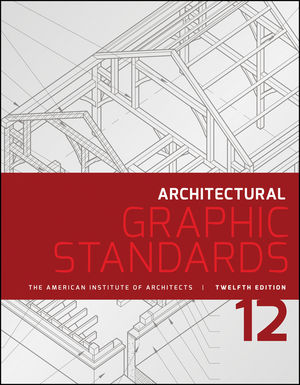Green building is all about performance, explaining why savvy building professionals are so focused on data and measurement today. Whether it’s R-values, efficiency ratings, or solar heat-gain coefficients, comparisons of product and system performance are central to sustainable design.
These evaluations invariably start with building codes and standards – the authoritative benchmarks of performance. Whether it’s the International Codes, ASTM standards or ASHRAE 90.1, codes go everywhere that LEED and other voluntary programs don’t. “The codes are the foundation of any sustainable building strategy,” says Allan Bilka, RA, a senior staff architect with the International Code Council (ICC). “Green and sustainable building rating systems would be ineffective without this foundation.”
Yet while many architects know how important code evaluations are, programs like LEED – though only applied to a tiny fraction of the building stock – remain foremost in their minds. Is the basis of green building getting lost in the shuffle? Experts in codes and green building worry that’s the case, and they encourage building teams to get back to basics.
Take ASHRAE 90.1, for example, the American Society of Heating, Refrigerating and Air-conditioning Engineers energy standard that covers everything from boiler efficiency to lighting to fenestration. The 2007 version of this energy mandate also calls for “air sealing” of joints and openings, a standard that underlies new rules on air barriers requirements adopted by many state codes. NIST projects that air barriers will cut natural gas and electricity use by about 40 percent and 25 percent, respectively – a huge reduction in our carbon footprint.
Not only will air barriers slash carbon emissions and improve indoor environmental quality (IEQ), but also they’ll become central to greener performance. No surprise, then, that new standards on air-tightness and leakage rates are being developed by ASTM.
An International Green Code
While air barriers are big news, the biggest announcement in green building came from the ICC last year, when they unveiled the new International Green Construction Code (IGCC). Developed with the American Institute of Architects (AIA) and ASTM International, the IGCC will help architects meet the AIA’s “2030 Carbon Neutrality Goal” and, through ASTM, strengthen the scientific basis of green building.The IGCC will be the first model code for new and existing buildings that mandates performance and prescriptive solutions. Also involved in its development were ASHRAE, the U.S. Green Building Council (USGBC), and the Illuminating Engineering Society (IES). The new code won’t be final, however, until 2012.
Still, project teams can start today with an alternative jurisdictional compliance option that will be incorporated within IGCC: Standard 189.1-2009, Design of High-Performance Green Buildings, Except Low-Rise Residential Buildings. Created by ANSI and ASHRAE with the USGBC and IES, Standard 189.1 takes green building to a new level.
For example, on the critical topic of air barriers, Standard 189.1 mandates the air-leakage performance requirements proposed for ASHRAE 90.1, guaranteeing those big efficiency gains estimated by NIST. To meet the new rules, building air barrier materials must not allow air leakage exceeding 0.004 cfm/ft2 at 0.30 in. water – per ASTM’s standard E2178 – according to David Kent Ballast’s authoritative Architect’s Handbook of Construction Detailing. For building assemblies, Ballast writes, the requirement is less restrictive, at 0.04 cfm/ft2 at 0.30 in. water, which can be tested with ASTM E1677. For an entire building, air leakage should be tested per ASTM E779 at less than 0.4 cfm/ft2.
Several states and Canada also refer to these air leakage rules and ASTM standards, and they will become more important over time. The Massachusetts Energy Code and the National Building Code of Canada prescribe material air leakage not exceeding 0.004, and Minnesota Residential and Commercial Energy Code has proposed meeting the same minimum performance. Wisconsin prescribes that leakage through assemblies not exceed 0.06 cfm/ft2 in its state energy code.
Clearly, knowledge of ASTM’s protocols is vital to building green today – and more than ever when IGCC is published. “It’s the testing standards that feed into sustainability,” says Sto Corp.’s Terry L. Viness, P.E. “They help us make better choices about the sustainability of our products. And products not listed in the code, or not evaluated by an approved entity, should be scrutinized before they are used.”
It's the Energy, Stupid
In addition to IGCC and the tightening of air barrier rules, a flurry of local green-building ordinances and the sweeping mandates like the ICC’s International Energy Conservation Code (IECC) press building teams to make their buildings greener.Dig down a bit, and new green standards from groups like ASTM, UL and the Canadian Construction Materials Center (CCMC) provide essential metrics for every type of material, assembly and system. On top of all that, there are now valuable, consensus-based model codes for sustainability, including the National Green Building Standard, published in 2008 by ICC, the National Association of Home Builders, and the American National Standards Institute (ANSI).
Since codes and standards provide a scientific, performance-based rationale for green building, what principles underlie the new rules? Energy efficiency and building durability, say experts like John Tooley, senior building science consultant with Advanced Energy, Raleigh, N.C., are two of the most crucial aspects of green design. They are central to successful building operations, and so should drive design-phase decisions.
Durability is hard to quantify, yet codes and standards present minimum criteria for a product’s ability to resist rot, freeze-thaw cycles, exposure to sunlight, and the like. A Canadian process standard is currently in development to codify a way to assess durability, but in the meantime, durability criteria are available to inform life-cycle analysis (LCA) and other green building choices.
Energy efficiency, on the other hand, is low-hanging fruit. “Energy codes haven’t been in the spotlight like they are now, and they’re changing, reflecting work going on at ASHRAE and other organizations, and the political climate is influencing that,” says John Edgar, Sto Corp’s Technical Manager – Building Sciences in Atlanta. Paraphrasing a quotation attributed to 2030 Challenge creator Ed Mazria: “Building green isn’t about bicycle racks. It’s the energy, stupid.”
This trend affects more than HVAC system design. The IECC, for example, specifies R-values for insulation and enclosures based on climate zone. ASHRAE 90.1 calls for “continuous insulation,” known by the shorthand ci, in six of eight U.S. climate zones. This requirement has led to more use of exterior insulated claddings, such as insulated metal panels and EIFS, which deliver the R-values and moisture control traits encouraged by the energy standard.
Continuous Insulation, Explained
A few ideas behind today’s green codes and standards are universally acknowledged, and one is continuous insulation. “A desire to increase energy efficiency is driving this trend, but durability was one original motivation,” says John F. Straube, Ph.D., P.Eng., a building science engineer. “It is now in the codes for energy reasons, but it’s also more durable, too, because critical, moisture-sensitive components are maintained at closer to room temperatures.”In fact, ci is a requirement for most wood and steel-framed wall construction in the United States, says Straube. Based on requirements in the ASHRAE standards or in the International Building Code (IBC) and the International Residential Code (IRC), the continuous insulation in wood-frame and steel-frame construction should match the demands of the project’s climate zone.
For example, steel-framed walls in Climate Zone 5 – which covers Chicago, Las Vegas and Boston – require an R-value of 7.5 to meet the 2009 IBC and IECC. To meet the 2009 version of ASHRAE 189.1 or the upcoming IGCC code mandates, bump up the minimum to R-10 for those cities. Wood-framed walls fall into a similar range of ci insulating values.
Green Performance Attributes - and Codes
With widespread use of techniques like continuous insulation, the energy efficiency and durability of today’s buildings will improve dramatically across the industry, making the world a notch greener. Yet, they’re not the only areas where codes and standards propel the green building movement. Other drivers include water and raw material usage, and new local codes and national standards are helping define what constitutes true conservation. Human health and safety is another key area, and building codes and standards – which first and foremost are created to protect the public welfare – are rapidly changing to keep up with new concerns, such as material content with urea formaldehyde or volatile organic compounds (VOCs).Few products have code recognition for overall sustainability, but some may have listings or certifications that ensure their green traits. Testing by the government and recognized groups like Franklin Associates and IAS help verify product claims, though some private labeling organizations may not list products strictly based on performance alone.
Codes and standards are different. They offer third-party, neutral, impartial and consensus-based answers – a hefty counterweight to “greenwash” and competing claims so common in the arena of sustainability. The ICC codes, for example, list products that meet key performance and durability criteria, providing a quick yes-or-no reference for products.
In assessing materials and systems for green buildings, a detailed review of relevant standards and codes is clearly essential, says John Amatruda, RA, a partner with Viridian Energy & Environmental, Norwalk, Conn. So for project planning, the questions are: Which of the selected products have code recognition? Which of them meet the key standards that drive durability, resource efficiency and human well-being in the final built project?
Standards of Performance
Drilling down to a few examples illustrates how codes and standards help ensure success in green building. Let’s start with a few important drivers.- Durability. Robust building materials are central to
sustainability, especially when they are hidden deep within construction
assemblies. If the building is designed to last 50 or 100 years or longer, then
the structure, insulation and membranes must last that long, too. If not, the
design must provide the needed redundancy.
One example is sealants and adhesives. While new products may last five times as long as the materials they replace, they rarely last the full life of the building. “Modern sealants will last 20 years, so it’s easier now for people to use sealants instead of flashing,” says Roger G. Morse, AIA, president of Morse Zehnter Associates, Troy, N.Y. “But ultimately they’ll fail. So to make it a sustainable building, they also needed to use metal flashing to keep water out, and other simple, reliable materials.”
In the case of air barriers and water-resistive barriers, this is especially critical. If the barrier fails, a cascade effect will undermine the energy efficiency and safety of the entire, formerly green building.
For barriers as for any other product, the starting place in the IBC and the IRC is Acceptance Criteria (AC). In this case, AC-212 includes durability measures including accelerated aging and weathering results, water-penetration resistance, racking strength, combustibility and air leakage rates. If the product passes the tests, it gets an ICC-ES Evaluation Report describing the criteria and recognizing that it’s an accepted method or alternate. For example, StoGuard is recognized as an acceptable alternate to code-mandated water-resistive barriers. - Fire resistance. As an essential aspect of building durability,
fire resistance is a basic element of sustainable design – yet one that is
often overlooked.
In this case, too, the architect or building team should ask, “Does the product have an ICC-ES Evaluation report?” If the answer is no, the manufacturer may not have performed the large-scale fire tests required to demonstrate that their product can be used in non-combustible construction (NFPA 285), and they may not have done any large-scale fire-resistance rating tests (ASTM E119). If the substrate is masonry or concrete, this may be a moot point – but if it’s frame construction, it is a risk. - Energy
efficiency. High-efficiency
building systems are important for sustainability. For a truly sustainable
building, however, the enclosure also must be engineered and tuned to control a
variety of interrelated performance variables. Air tightness and high R-value
are critical, as is preventing thermal bridges and excessive solar gain.
Codes and standards establish minimum criteria, it is often argued. However, so do all prescriptive standards, including LEED ratings, by definition. More important, the codes provide a framework for what is allowable and prudent – often with built-in advice on how to exceed the minimum. For example, minimum R-values given in the codes can be improved upon by using continuous exterior insulation, such as in an EIFS insulated cladding, with expanded polystyrene panels of up to 12 inches thick, for R-values up to R-48. This approach meets fire-safety codes, is easy to construct, and even meets the call for “ci” – continuous insulation – in ASHRAE 90.1. - Air
tightness. When required, an
airtight envelope is critical to energy conservation and sustainability.
Interest in this approach has led to prescriptive and performance-based codes
for air barriers and other assemblies over the last few years.
Key performance criteria for air barriers are listed in the CCMC Technical Guide for Air Barrier Materials, and, when the air barrier is intended to perform as a water-resistive barrier, ICC-ES AC 212, Acceptance Criteria for Water-Resistive Coatings Used As Water-Resistive Barriers over Exterior Sheathing. In addition to detailing a continuous, structural air barrier, architects should select air-barrier materials such as StoGuard, a fluid-applied, waterproof air barrier material that meets both of these criteria. Basically, that means the material is recognized as a water-resistive barrier in the United States and as an air barrier material in Canada.
A close reading of the codes will often shake even the firmest assumptions about green building. For example, the proposed Washington State Energy Code amendments would rule out building wraps and papers because they’re not continuous and can’t withstand positive and negative wind loads. Similar to the Canadian code, which often presages code changes in the U.S. geared toward energy efficiency or sustainability, the amendments would apply to buildings greater than five stories tall.
In another proposed amendment, Washington State could be the first U.S. jurisdiction to require whole-building “leak testing” to ensure the air barrier works as designed. - IEQ and
toxins. Keeping outdoors
and indoors separate is a key aspect of green building now mandated in many
codes. Just as important, however, are indoor-air quality and other
environmental factors. In addition to moisture and mold, building products
should not bring unsafe levels of toxins or VOCs into occupied areas. Codes
vary in their approach to VOCs, however, as do the numerous private groups that
certify VOC levels for building materials and products.
Many green building professionals have chosen to meet one of the most stringent standards for VOCs, California’s SCAQMD Rule 1113, published by the South Coast Air Quality Management District. For architectural coatings, for example, Rule 1113 limits VOC levels to 50 grams per liter – just one-fifth of the Environmental Protection Agency’s allowable limit of 250 g/L.
Numerous products meet these more stringent limits, in part because architects have promoted and adopted the code in their own work. Systems such as StoTherm EIFS meet the SCAQMD rule, as does the spray-applied StoGuard air barrier.
When the Codes Aren't There
It’s hard to argue that codes and standards, when carefully applied, don’t do a great deal to improve green building. They are vital to ensuring the integrity and durability of a building, for everything from weather and fire to building movement and freeze-thaw cycles, and much more.Yet sometimes codes and standards won’t answer a critical question, because they haven’t kept pace with every advance in construction materials and methods. So what does the project team do when codes and standards don’t help? The answer, surprisingly, is often still in the codes.
For example, there is currently no standard for the durability of an air barrier. Clearly, however, this important system must resist rot, movement, wind loads, and more. So to ensure their building enclosures work as part of a sustainable design, many architects and engineers have applied water-barrier standards, such as AC212 and ASTM 2570, which covers their use under EIFS.
Similarly, continuous exterior insulation is subject to many factors that might compromise its effectiveness or appearance, such as impacts and scratches. Since there’s no standard for exterior ci, many architects apply ASTM E2568, providing a baseline standard for ci performance.
Codes and Greenwash
Why does it matter to apply codes and standards? Ask the professionals who use them everyday in their CDs and spec books. First, they help cut through the misinformation and greenwashing that plagues the sustainability marketplace.Behind the codes and standards are rigorous testing methods developed in a public forum with independent laboratories, code officials, building consultants, and industry input. They give projects a baseline and benchmark for performance from third-party, neutral, impartial and consensus-based resource – exactly what you need in the politically charged, often confusing arena of sustainability. (As one manufacturing executive quipped, “Codes are the Switzerland of the building world.”)
The increased use of life-cycle analysis and regional adaptations of the LEED rating system demonstrate that codifying and calculating sustainability is a complex process. And just by following one standard or another, architects can’t instantly make a building green.
But architects and project teams can achieve sustainability by looking for codes and standards that increase durability, reduce energy and materials needed, and make buildings safer and healthier for occupants. New editions of the codes may include new language and provisions for better, greener decisions. The new omnibus ASTM standards for EIFS adopted by the ICC offer a powerful example: When used as a design guideline, this new provision leads to more durable, energy efficient structures with better IEQ.
Those omnibus standards will help make us green, but it’s just one more example. Behind the next 200-year building are materials and construction approaches that have been proven to work – and put into North American codes and standards.





Report Abusive Comment